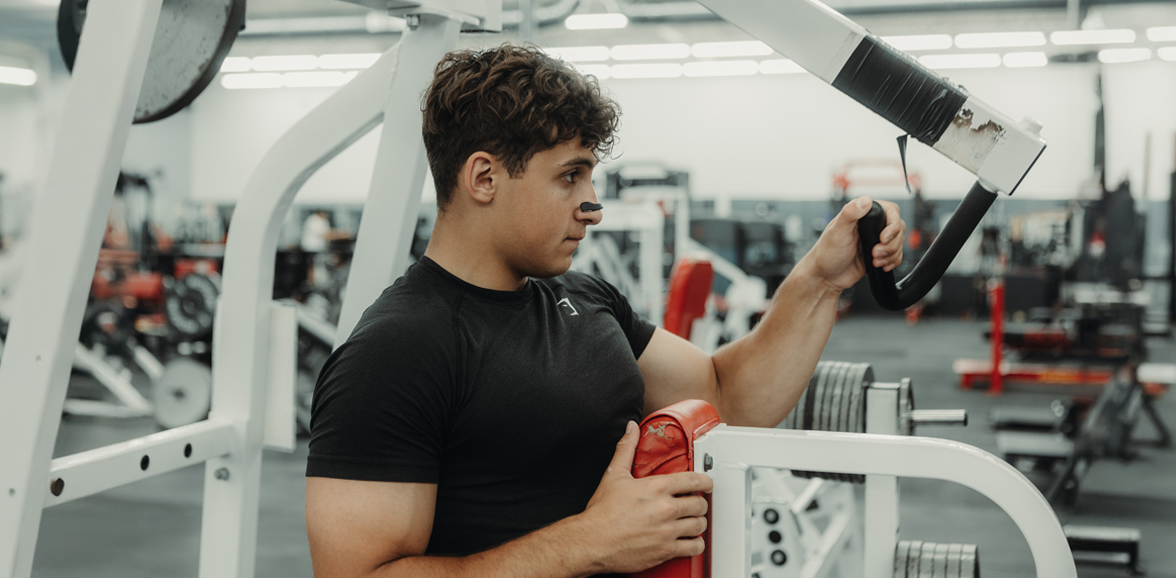In the relentless pursuit of excellence, athletes often seek routines that can translate into significant performance improvements. One such innovation gaining traction is the use of nasal strips. Notably, tennis star Casper Ruud and motocross champion Cooper Webb have incorporated nasal strips into their routines, experiencing tangible benefits in breathing efficiency and overall performance.
The Unexpected Advantage: Casper Ruud's Discovery
 Casper Ruud, a top-ranked tennis player, initially purchased nasal strips online to alleviate nasal congestion during sleep. To his surprise, he found them beneficial not only for rest but also during matches. Ruud noted that wearing a nasal strip helped him breathe more easily on the court, potentially providing a slight edge in endurance and recovery between points. He mentioned, “It gives me just a few percentage points extra oxygen… the feeling on court is that I can last longer in a rally”.
Casper Ruud, a top-ranked tennis player, initially purchased nasal strips online to alleviate nasal congestion during sleep. To his surprise, he found them beneficial not only for rest but also during matches. Ruud noted that wearing a nasal strip helped him breathe more easily on the court, potentially providing a slight edge in endurance and recovery between points. He mentioned, “It gives me just a few percentage points extra oxygen… the feeling on court is that I can last longer in a rally”.
Breathing Easy: Cooper Webb's Experience
 Motocross rider Cooper Webb has also embraced nasal strips to enhance his performance. In a sport where maintaining focus and endurance is critical, improved nasal airflow can be a game-changer. Webb's use of nasal strips underscores their versatility across different sports disciplines.
Motocross rider Cooper Webb has also embraced nasal strips to enhance his performance. In a sport where maintaining focus and endurance is critical, improved nasal airflow can be a game-changer. Webb's use of nasal strips underscores their versatility across different sports disciplines.
The Power Behind Nasal Strips
Nasal strips are bands applied externally across the nose, designed to open the nasal passages and improve airflow. By reducing nasal resistance, they facilitate better oxygen intake, which is crucial during intense physical activities.
How does it work?

Integrating Nasal Strips into Your Training: A Game-Changer for Your Routine

For athletes and coaches considering the incorporation of nasal strips:
- Trial During Training: Use nasal strips during practice sessions to assess comfort and effectiveness.
- Monitor Performance Metrics: Track endurance, recovery times, and perceived exertion to evaluate the impact.
- Educate Athletes: Provide information on nasal strips' benefits and proper usage to encourage adoption.
- Combine with Breathing Techniques: Practice diaphragmatic breathing alongside using nasal strips to maximize oxygen intake and control. This combination can enhance respiratory efficiency and overall performance.
Adressing Common Challenges
Allergies and Nasal Congestion
Athletes often face challenges like allergies or nasal congestion, which impede breathing. Nasal strips can help keep the nasal passages open, facilitating better airflow during such conditions.
Sleep and Recovery
Quality sleep is crucial for recovery. Using nasal strips during sleep can reduce snoring and improve breathing, leading to more restful sleep and better recovery.
More Athletes Who Use Nasal Strips to Boost Performance
Tennis Players
- Carlos Alcaraz: The four-time Grand Slam champion has been seen wearing nasal strips during matches since the previous season. He mentioned that the strips help him recover better between points.
- Nicolás Jarry: After nasal surgery in 2020, the Chilean player relies on nasal strips for every practice and match to aid his breathing.
Track and Field
- Sam Gordon: The Welsh international sprinter uses nasal strips, giving him that extra edge in training and competition.
Triathlon
- Lloyd Williams: Team GB triathlete and co-founder of VO2 Pro, he advocates for nasal strips to enhance respiratory performance across all three triathlon disciplines.
“Why not try to bring it to practice? It feels like I'm breathing better”. - Casper.
The experiences of athletes like Casper Ruud and Cooper Webb highlight the potential benefits of nasal strips in enhancing their athletic careers. By improving breathing efficiency, nasal strips can improve endurance, quicker recovery, and overall performance gains.
Explore how nasal strips can elevate your athletic performance. Visit Intake Breathing to learn more about our products designed to help you breathe better and perform at your best.




